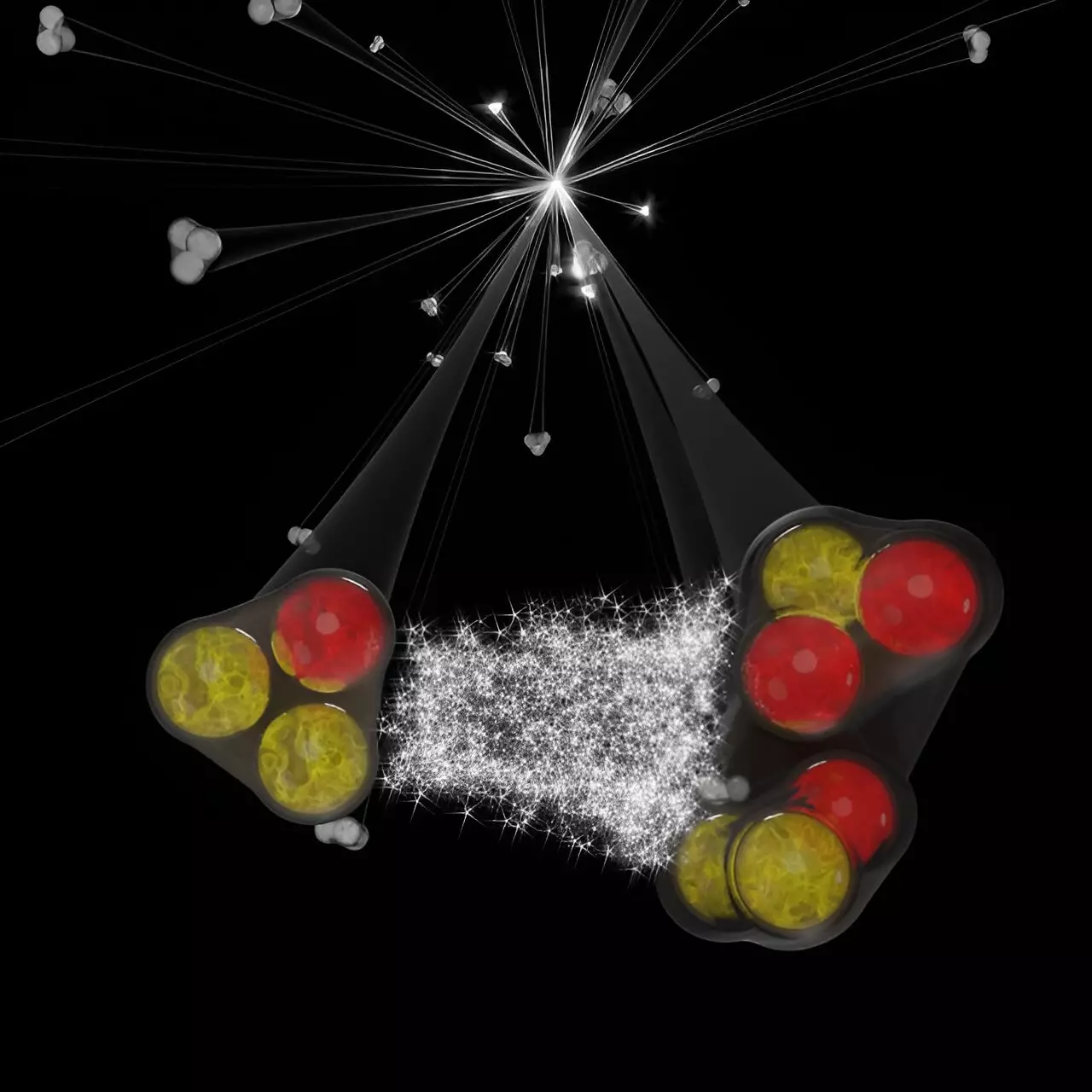In recent advancements within nuclear physics, the complexities surrounding three-body interactions are gaining increased focus. The ALICE collaboration has provided significant insights through extensive studies of kaon-deuteron and proton-deuteron systems. These investigations offer a pathway to unraveling the intricate forces that govern three-body nuclear configurations, essential for understanding the underpinning phenomena that shape modern nuclear physics. Traditional approaches typically examine two-body interactions; however, moving beyond this simplification necessitates robust analytical models and experimental techniques capable of addressing three-body dynamics.
The Significance of Three-Body Interactions
The premise behind many nuclear phenomena, including the structural integrity of atomic nuclei and the enigmatic makeup of neutron star centers, revolves around the understanding of how particles interact within three-body frameworks. Proton-proton collisions at the Large Hadron Collider (LHC) produce not only a multitude of particles but also showcase interactions that occur at incredibly small distances, often within the realm of femtometers (10^-15 meters). These distances challenge researchers to investigate potential influences among particles generated nearly simultaneously.
When two particles arise closely in momentum and alignment, a spectrum of interactions may reveal themselves, governed by both quantum statistics and fundamental forces. The significance of this inquiry lies in its potential to yield insights into the nuances of particle interactions, specifically when one of the entities is a deuteron—a composite of protons and neutrons.
The ALICE collaboration has harnessed advanced particle identification capabilities that serve as a cornerstone for their current investigations. By analyzing high-multiplicity proton-proton collisions at a center-of-mass energy of 13 TeV, the collaboration has developed correlation functions that illuminate the interplay of particle momenta. This function quantitatively assesses how the likelihood of detecting two particles with specific relative momenta diverges from the scenario where these momenta are entirely independent.
This method is particularly revealing because, in the absence of interaction, the correlation function maintains a value of one. Metrics below this threshold indicate repulsive interactions, while those above signpost attractive tendencies. Intriguingly, the correlations derived from the kaon-deuteron and proton-deuteron systems showed a consistent repulsive interaction for low transverse momenta, which opens the door for deeper analytical inquiries.
In terms of specific findings, the ALICE studies revealed that the distances at which kaons and deuterons form exhibit pronounced compactness, with measurements indicating approximately 2 femtometers. While kaon-deuteron correlations can be effectively described using two-body models that incorporate the impacts of Coulomb and strong forces, the same methodologies fall short in adequately addressing proton-deuteron correlations. This inadequacy demonstrates the necessity for comprehensive three-body calculations that take into account the deuteron’s structural intricacies.
Moreover, the success of correlating theoretical models with empirical data illustrates the robust sensitivity of the correlation function to short-range dynamics present within a three-nucleon framework. Such granular exploration not only refines our understanding of particle interactions but also showcases innovative methodologies for engaging with three-body nuclear systems at the LHC.
The implications of the ALICE collaboration’s findings extend beyond current investigations. The potential to apply similar methodological frameworks to forthcoming data from LHC Runs 3 and 4 prompts exciting prospects for probing three-baryon systems, particularly in sectors related to strange and charm quarks, areas that remain largely experimental blind spots. The ability to expand this research horizon may lead to revolutionary understandings of baryonic interactions at unprecedented scales.
The groundwork laid by the ALICE collaboration through the study of kaon-deuteron and proton-deuteron correlations illuminates a compelling narrative within nuclear physics. As researchers continue to dive into the complexities of three-body interactions, the findings serve to bridge knowledge gaps and inspire future explorations of the fundamental forces that govern our universe.


Leave a Reply